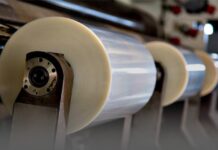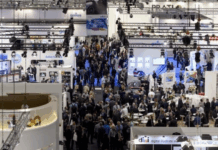The Indian label industry is outwardly fine. Although every converter and supplier has some
scars from the Covid-19 pandemic, these are largely not to be talked about. Everyone wants to get on with the show to recoup the losses of time and money. To reengage in the trajectory of high growth and reasonable profit – to invest in new-infrastructure and machinery and get back to the talk of innovation and all the other business paradigms and motivational pep talks.
Label converters that we talk to are optimists at heart. “All good,” they say. Then when we talk about the raw material prices and the flat demand in the current market, they get a bit serious. They don’t say it, but what they mean is, “We are essentially working for our suppliers – they raise their prices and we run after the brand owners to raise our prices. The brand owner says sure we will look at increasing the price in maybe two or three months, and by the time he agrees, the suppliers raise the prices of raw materials again.

“It is an unending cascade of prices increases, and there are as many reasons as there are for the daily volatility of the stock market. It could be the fuel surcharge on face stock from Europe, the war in Europe, a paper mill strike, the high cost of energy, containers and logistics. Not only raw materials, even the prices of imported label presses have risen by 15 to 20%.”
Outwardly the label industry is just fine. New label printers are still coming to market and buying new presses. In fact, while very few presses were imported during the pandemic, it was a good time for the Indian narrow web label press manufacturers’ sales. Now that the new normal has arrived, imported presses are again being ordered and installed.
For instance, Mark Andy has been quite successful recently with more than half a dozen installs and impending installations in India and Bangladesh of its P5, P7 and E3 presses. Notably there are two Evolution P7 label presses for Bangladesh says Gourav Roy, the managing director of FIG, its distributor in most of South Asia. Roy reveals that his company also installed about two dozen Luster inspection machines from China in the past 20 months.
One trend is of commercial printers migrating to label production apart from their almost natural migration to cartons. Naturally this makes label prices more chaotic and competitive.
The pandemic trend of buying digital presses seems to have moderated. While these presses required less human resources and were viable for short runs, incorporating unique serialization and barcodes, the demand for flexo presses has returned. However these are now being sold and bought in wider configurations and with greater automation and not just for labels but also for sleeves and flexible packaging – similar in fact to some of the digital label and packaging presses.










